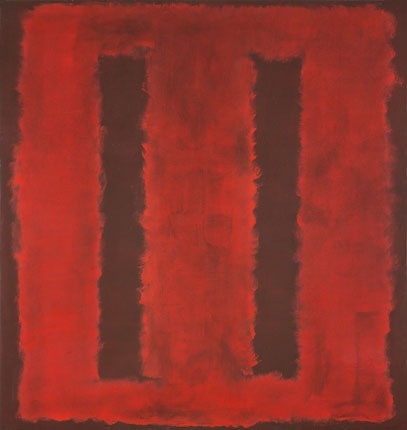Rothko would try out different ideas of abstract shapes which had openings witin them, as opposed to his other contributions to the Color Field movement. Here he paints a large orange square but leaves two long holes within the centre which serve as portals through which we can look through to the background behind. This may well have been inspired by a trip to the Seagram Building, and perhaps there was an architectural flourish there which gave Rothko this idea. He wanted to make this commission original and customised to the location, though eventually he felt out of love with the idea of displaying his work within a restaurant and so pulled out of the project. The items that he completed were later to become known as his Seagram Murals and it is unfortunate that their intended desination was never quite realised.
The artist did not take on commissions too frequently and tended to prefer to work without interference. This perhaps explains why he would later pull out of this particular plan and disperse the paintings freely amongst art galleries. He loved to avoid comparisons to others and even was unhappy about being classified alongside others within the highly regarded New York School. Essentially, he wanted to protect his uniquess and independence throughout his career and just get on which experimenting and creating new ideas from the deep depths of his mind.
One the Seagram Building project was curtailed, the artist chose to give away some of his work for this series to public art galleries as a means to promote his career and also to give back to some of the insititutions from which he had learnt so much in his younger years. He would spread the murals between the US, UK and Japan and most can be seen there still today. In his later life he wanted to protect his legacy so that future generations could learn from what he had done, and so he hoped to avoid selling everything privately, although to a certain degree that could not be helped once he had passed away. He was also a highly prolific artist and so thankfully there was plenty to go around both private and public collections.

